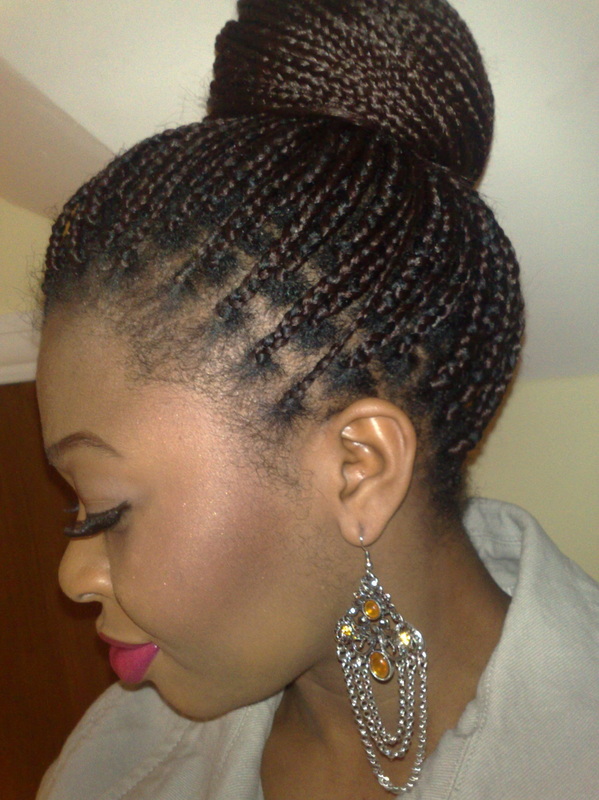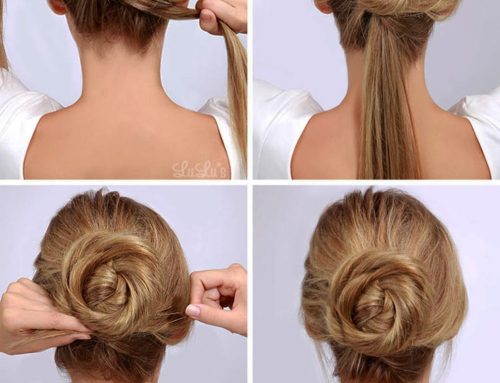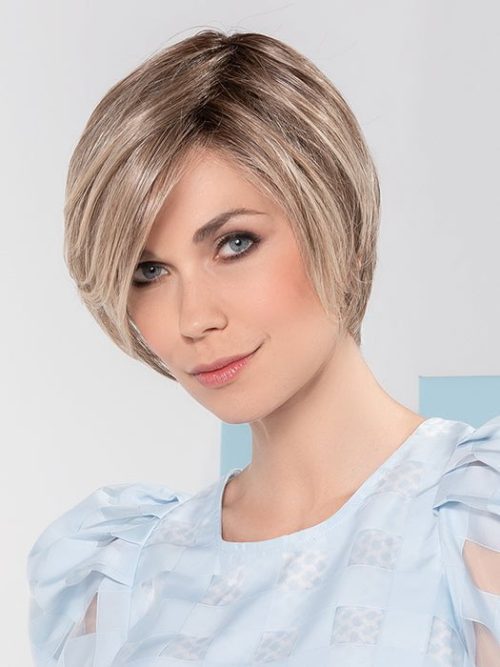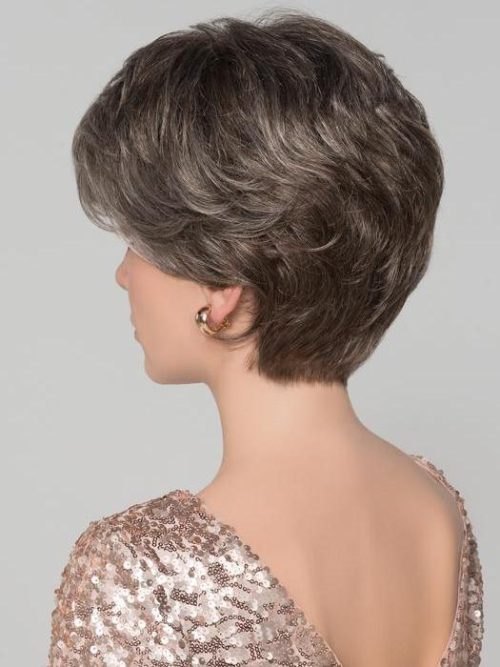How to Prepare Hair for Braiding: Your Ultimate Guide to Stunning, Healthy Braids
Hey there, braid lovers! Whether you’re dreaming of sleek box braids, playful cornrows, or a chic French braid, the secret to a jaw-dropping look starts way before the braiding even begins. Prepping your hair right can make your style last longer, feel comfier, and—most importantly—keep your natural hair healthy underneath. If you’ve ever wondered why your braids get frizzy fast or your scalp itches like crazy, this guide is for you. We’re diving deep into everything you need to know about how to prepare hair for braiding, with some insider tips, surprising facts, and practical hacks you won’t find just anywhere. Let’s get started!
Why Prepping Your Hair Matters More Than You Think
Prepping your hair isn’t just a boring chore—it’s the foundation of a braid game that turns heads. Think of it like prepping a canvas before painting a masterpiece. Skip this step, and you’re setting yourself up for tangles, breakage, or even scalp drama. Good prep means your braids stay neat for weeks, your hair grows stronger, and you avoid that “I need to scratch my head now” feeling in public.
Here’s the deal: your hair’s going to be tucked away for a while, so it needs to be in top shape. A little effort upfront saves you from big regrets later. Plus, who doesn’t want to spill some tea about their braid prep secrets at the next sleepover? Let’s break it down.
The Science Behind It
Your hair and scalp are living ecosystems. Hair strands are made of keratin, a tough protein, but they’re still fragile when wet or overstressed. Your scalp produces natural oils (sebum) to keep everything hydrated, but buildup from products or sweat can clog it up. Recent studies—like one from Consumer Reports in February 2025—show that synthetic braiding hair can even release chemicals like VOCs (volatile organic compounds) when heated, which might irritate your scalp if it’s not clean and ready. Prepping clears the slate and protects your hair from all that jazz.
What Happens If You Don’t Prep?
- ✔️ Frizz City: Unprepped hair gets wild fast, making your braids look messy.
- ❌ Breakage Blues: Tangles and weak strands snap under tension.
- ✔️ Itchy Scalp Nightmares: Dirt and oil trapped under braids? Hello, itch central.
Quick Tip: Ever notice how your braids look amazing Day 1 but flop by Day 7? That’s often a prep problem, not a braiding fail.
Step 1: Start with a Clean Slate—Wash It Right
First things first: your hair needs a bath. A clean scalp and strands are non-negotiable for braids that slay. But here’s where a lot of folks miss the mark—washing isn’t just about shampooing and calling it a day. Let’s spill some secrets on how to do it like a pro.
Pick the Perfect Shampoo
Not all shampoos are braid-ready champs. You want a clarifying shampoo to zap buildup from styling products, sweat, and life in general. Regular shampoos might leave residue, which is a no-go when your hair’s about to be locked down.
- Try This: Look for sulfate-free clarifying shampoos with tea tree or peppermint. They deep-clean without stripping your hair bare.
- Fan Favorite Hack: Mix a teaspoon of baking soda into your shampoo once a month for an extra detox. (Don’t overdo it—your scalp will thank you!)
Why It Works: A 2024 study from the American Academy of Dermatology found that buildup on the scalp can increase irritation under protective styles like braids. Clean hair = happy scalp.
How to Wash Like a Boss
- Section It Up: Divide your hair into 4-6 chunks with clips. This makes sure every strand gets love.
- Massage, Don’t Scrub: Use your fingertips (not nails!) to gently work the shampoo into your scalp. Think of it like a mini spa day.
- Rinse Thoroughly: Leftover shampoo is a frizz factory. Rinse until the water runs clear.
- Double Up If Needed: Got a lot of product buildup? Two washes might be your vibe.
Pro Secret: Licensed cosmetologist Niani B. says, “A clean scalp is the foundation for box braids that last. Skip this, and you’re begging for trouble.” She’s right—your braids deserve a fresh start.
Skip the Oils (For Now)
Here’s a twist: don’t slather your hair with oil right after washing. Oils can make your hair too slippery, and braids won’t grip as well. Save the shine for after the braids are done. Trust me, I learned this the hard way when my cornrows slid out in a week!
![]()
Step 2: Detangle Like Your Hair Depends On It
Tangles are the enemy of perfect braids. Ever tried braiding knotty hair? It’s like trying to untie a shoelace after a marathon—frustrating and messy. Detangling sets you up for smooth, even braids that don’t pull your soul out.
Tools of the Trade
- ✔️ Wide-Tooth Comb: Your BFF for gentle detangling.
- ❌ Fine-Tooth Comb: Too harsh—save it for post-braid touch-ups.
- ✔️ Detangling Spray: A little spritz (like a leave-in conditioner) makes knots melt away.
Detangling 101
- Start Wet or Damp: Hair’s more flexible when it’s got some moisture. Post-wash is prime time.
- Work Bottom to Top: Begin at the ends and move up to the roots. This prevents yanking out healthy strands.
- Be Patient: Got thick curls? Take your time—rushing rips hair.
- Section Again: Smaller chunks = less chaos. Clip away what you’re not working on.
Fun Fact: Did you know detangling can be oddly satisfying? I’ve spent hours in front of a movie, comb in hand, just vibing. It’s my secret Zen moment.
Why It’s a Game-Changer
Knots cause uneven braids and extra tension, which can lead to breakage or even traction alopecia (hair loss from pulling). A smooth base means your braider (or you!) won’t be fighting the hair—and your edges stay safe.
Step 3: Moisturize Without Overdoing It
Hydrated hair is happy hair, but there’s a fine line between moisturized and soggy. Too much moisture, and your braids won’t hold; too little, and your strands snap like twigs. Let’s find that sweet spot.
The Best Moisturizers for Braids
- Leave-In Conditioner: Lightweight and perfect for locking in moisture without grease.
- Shea Butter Cream: A tiny dab goes a long way for dry hair types.
- Water-Based Sprays: Think aloe vera or rose water for a quick hydration hit.
Avoid This: Heavy oils or thick pomades—they build up fast and attract dust.
How to Apply It
- Spritz or Dab: Lightly mist your hair with a spray or rub a pea-sized amount of cream between your palms.
- Focus on Ends: They’re the oldest, driest part of your hair and need extra TLC.
- Don’t Soak It: Wet hair stretches and breaks easier. Aim for damp, not dripping.
Real Talk: I used to drench my hair in coconut oil thinking it’d be a moisture miracle. Nope—my braids got fuzzy in days. Less is more, friends.
Science Says…
A 2023 study from the Journal of Cosmetic Dermatology found that well-hydrated hair is 30% less likely to break under tension. Braids pull on your strands, so starting hydrated gives them a fighting chance.

Step 4: Stretch It Out for Sleek Braids
Ever wonder why some braids look stretched and polished while others puff up? It’s all about pre-stretching your hair. This step blends your natural texture with braiding hair for a seamless finish.
Stretching Methods
- Blow-Dry: Quick and effective with a heat protectant.
- Banding: Wrap small sections with hair ties overnight—no heat needed.
- Bantu Knots: Twist sections into mini buns and let them dry for a stretched, wavy vibe.
Blow-Dry Like a Pro
- Heat Protectant First: Spray or apply a lightweight protector to shield your strands.
- Low Heat, High Power: Use a medium setting with a comb attachment for control.
- Section by Section: Work in 4-6 parts for even stretching.
- Knot It Up: After drying, twist each section into a Bantu knot to keep it stretched.
Why It Works: Stretched hair aligns better with synthetic braiding hair, reducing frizz and making the braiding process smoother.
No-Heat Option
If heat’s not your thing, try banding:
- Divide damp hair into 4-8 sections.
- Wrap a hair tie every inch or two down each section.
- Sleep on it (with a satin bonnet!) and unravel in the morning.
Insider Tip: I’m obsessed with banding—it’s like a lazy girl’s cheat code to perfect braids. Plus, it’s a cute overnight look!
Step 5: Trim the Dead Ends (Yes, Really!)
Split ends and braids don’t mix. They’re like uninvited guests at a party—small at first, but they cause chaos later. Trimming before braiding keeps your hair healthy and your style crisp.
Why Trim Before?
- ✔️ Less Shedding: Dead ends break off in braids, leaving a mess when you take them out.
- ❌ Frizzy Ends: Split ends poke out, ruining that sleek look.
- ✔️ Growth Boost: Healthy ends grow faster under protective styles.
DIY Trim Guide
- Dry Hair Only: Wet hair hides split ends—trim when it’s dry and stretched.
- Small Snips: Take off ¼ inch at a time with sharp hair scissors (not kitchen ones!).
- Check Each Section: Twist small chunks and snip where you see fraying.
Confession: I used to skip trims because I was scared of losing length. Big mistake—my braids looked raggedy, and I lost more hair to breakage. Lesson learned!
Expert Insight
Trichologist Bridgette Hill says, “Trimming before braids isn’t just cosmetic—it’s a health move. You’re giving your hair a fresh start.” She’s spot-on—think of it as a reset button.
Step 6: Choose the Right Braiding Hair
Your natural hair’s ready, but what about the braiding hair? Picking the right stuff can make or break your style—and your scalp’s happiness. Let’s decode the options.
Synthetic vs. Human Hair
| Type | Pros | Cons |
|---|---|---|
| Synthetic | Cheap, lightweight, lots of colors | Can itch, may contain chemicals |
| Human Hair | Natural look, lasts longer | Pricey, heavier on your head |
2025 Update: Recent tests found carcinogens in all synthetic braiding hair samples. Opt for brands like Rebundle (banana fiber-based) or Dosso Beauty (hypoallergenic) if you’re worried about chemicals.
Prep Your Braiding Hair
- Wash It: Soak synthetic hair in warm water with apple cider vinegar for 10 minutes to cut alkalinity and reduce itch.
- Dry It: Air-dry overnight—wet hair tangles during braiding.
- Stretch It: Gently pull pre-stretched hair to avoid surprises mid-braid.
Fan Hack: I soak my hair in a vinegar mix while binge-watching shows. It’s my weird little ritual, and my scalp’s never been happier!
Step 7: Protect Your Scalp Before the Braid-Up
Your scalp’s about to go undercover for weeks, so give it some love first. A healthy scalp means less itching and better hair growth.
Scalp Care Basics
- Massage: Rub in a light oil (like jojoba) or a scalp serum 24 hours before braiding.
- Exfoliate: Use a gentle scrub (DIY: sugar + olive oil) to lift dead skin.
- Avoid Buildup: Skip heavy products the day before—no grease, please!
Why It Matters
A flaky or dry scalp gets worse under braids. Plus, a clean scalp grows hair faster—studies show massaging boosts blood flow by up to 20%.
Try This: I’m hooked on a pre-braid scalp massage with peppermint oil. It tingles, smells amazing, and makes me feel fancy.
Bonus Tips You Didn’t Know You Needed
Here’s where we get juicy—tips that’ll make your friends go, “Wait, how’d you know that?”
Timing Is Everything
- Wash 1-2 Days Before: Freshly washed hair’s too slippery; a day or two lets natural oils kick in for grip.
- Avoid Big Events: Don’t braid right before a sweaty dance party—give your scalp a breather first.
Sleep Prep
Sleep with a satin scarf or on a silk pillowcase the night before. It keeps your hair smooth and cuts down on last-minute detangling.
Mind the Tension
Tell your braider (or yourself!) to go easy. Tight braids look dope but can pull out edges. If it hurts, speak up—pain isn’t the goal.
Expert Nugget: Hairstylist Niani B. warns, “Too-tight braids are a one-way ticket to breakage. Prep strong, braid smart.” Preach!

Troubleshooting Common Prep Problems
Even with the best prep, stuff happens. Here’s how to fix it:
Dry Hair Woes
- Problem: Hair feels brittle post-wash.
- Fix: Layer a leave-in conditioner and seal with a tiny bit of shea butter.
Scalp Itch Before Braids
- Problem: Itching starts before the style’s even in.
- Fix: Rinse with diluted apple cider vinegar (1:4 with water) to soothe.
Slippery Strands
- Problem: Braids won’t hold.
- Fix: Lightly mist with a water-based spray and let it air-dry halfway.
Your Pre-Braid Checklist
Ready to roll? Here’s your go-to list:
- ✔️ Clarify with a sulfate-free shampoo.
- ✔️ Detangle from ends to roots.
- ✔️ Moisturize lightly—focus on ends.
- ✔️ Stretch with heat or banding.
- ✔️ Trim split ends.
- ✔️ Prep braiding hair (wash if synthetic).
- ✔️ Massage your scalp.
Print This Out: Stick it on your mirror for braid day!
The Big Picture—Why This All Matters
Prepping your hair for braiding isn’t just about looking cute (though you will). It’s about respecting your hair’s journey. Braids are a protective style, but they only protect if you set them up right. Think of it as self-care with a side of slay—your hair grows, your confidence pops, and you’ve got a story to tell.
Fun Challenge: Next time you’re braiding, snap a prep pic and tag a friend. Who’s got the best detangling face?
Let’s Chat—Your Turn!
Alright, braid squad, what’s your prep secret? Drop it in the comments—I’m dying to know! Struggling with a step? Ask away, and I’ll hook you up with a fix. Oh, and if you loved this guide, share it with your crew—let’s get everyone’s braids on point.
- Q1: What’s your go-to pre-braid product?
- Q2: Ever had a braid fail you wish you’d prepped for?
- Q3: How long do your braids usually last?
Can’t wait to hear from you—let’s keep the braid love going!




